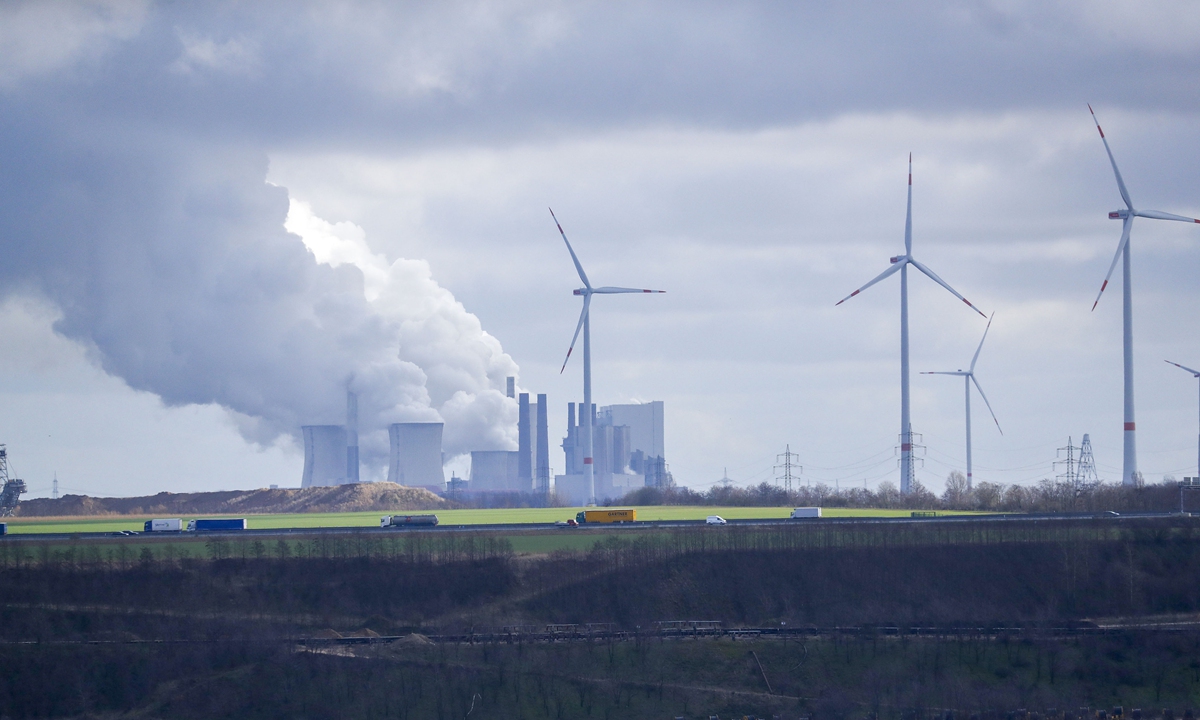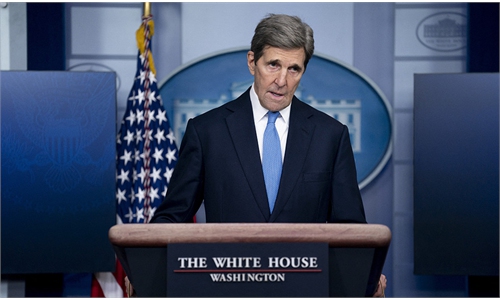
Wind turbines operate near the Neurath lignite fueled power station, operated by RWE AG, in Neurath, Germany on March 3, 2021. Photo: VCG
A Chinese research paper has warned that emerging economies will be the main contributors to global carbon dioxide emissions, and that to achieve global environment goals, developed countries should make room for emerging economies, as well as providing economic and technological support.
The report, 2022 Carbon Dioxide Emission Accounts of Global Emerging Economies, was published in Beijing on Tuesday.
With data collected from 50 emerging economies, such as Thailand, Turkey, Israel and Kenya, it said that those countries' annual emissions have exceeded global average levels from 2010 to 2018. Although each country emitted less than 1 percent of the global total, their total amount accounts for 1.6 times that of India, the world's third-largest emitter, according to the study, which was compiled by Guan Dabo, a professor from the Department of Earth System Science at Tsinghua University.
The report was jointly published by the department, the university's Institute for Carbon Neutrality, and the Administrative Center for China's Agenda 21. Guan was the report's lead author.
Guan pointed out that the countries' development model means they will continue to increase emissions in the near future. Yet to restrict the global average temperature this century to well below 1.5 C above pre-industrial levels while leaving emerging economies enough space for further growth in emissions, developed nations need to reduce their carbon dioxide emissions by 7.2 percent per year on average, Guan said.
However, statistics show that from 2010 to 2018 the EU and the US saw their carbon emissions decrease by only 1.4 percent and 0.9 percent respectively.
This has raised pressing demand for developed countries not only to realize their negative emission goals, making room for emerging economies, but also to offer those countries technological and economic support, said the study.
Rich countries generally lag behind their promises to offer poorer countries assistance on climate change. Rich countries agreed in 2009 that at least $100 billion a year would be provided annually from public and private sector sources to the developing world by 2020, in order to help poor countries cut greenhouse gas emissions and cope with the impact of the climate crisis.
Yet according to a report ahead of the UN Cop26 climate summit last year, those targets have so far gone unmet.
Furthermore, the energy crisis partly caused by the Russia-Ukraine crisis has forced some European countries to row back on their climate goals.
In contrast, China is sparing no effort in helping developed countries go greener. China made a promise last year that it would increase support for green and low-carbon energy in developing countries, and not build any new coal-fired power projects overseas.
China aims to enhance cooperation in multiple areas with the countries along the route of the Belt and Road Initiative by 2025 and form a green development pattern for the initiative by 2030, according to a guideline issued by the National Development and Reform Commission and three relevant departments in March.
Speaking at the publishing event for the report, He Kebin, academician of the Chinese Academy of Engineering, and professor at the School of Environment of Tsinghua University said that the report has provided scientific support for emissions from Belt and Road countries, and helps with the South-South cooperation on climate change.


